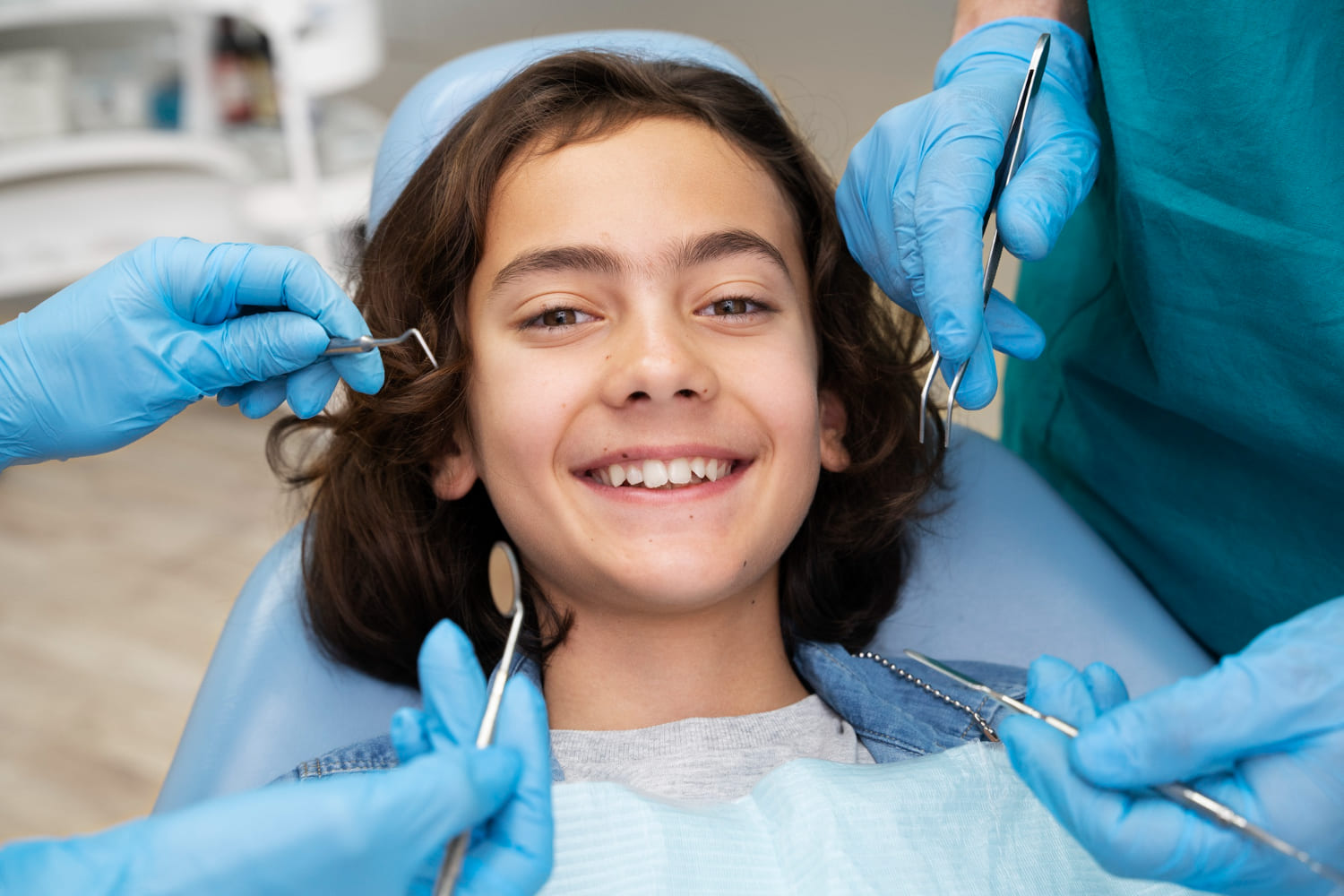Fairfield Early Interceptive Treatment
Early Interceptive Treatment
Guide your Child’s Dental Development
Early orthodontic intervention for children ages 7-11 can guide jaw growth and tooth development, potentially preventing more complex treatment later.

Why Start Early
The Benefits of Early Intervention
Setting the Foundation
Early interceptive treatment takes advantage of a child's natural growth to guide proper development.Optimal Timing
The American Association of Orthodontists (AAO) recommends that children have their first orthodontic screening around age seven.
Guide Jaw Growth
We can influence jaw growth while the bones are still developing, potentially avoiding surgery later.
Create Space
Early treatment can help create space for permanent teeth, reducing the likelihood of crowding.
Simpler Later Treatment
Phase 1 treatment often makes Phase 2 treatment shorter and less complex.
Common Issues
Conditions We Treat with Early Intervention
These orthodontic problems benefit from early treatment during childhood development.
Crossbites
When the upper teeth bite inside the lower teeth, which can affect jaw growth and how the smile develops.
Severe Crowding
When there isn’t enough room for adult teeth to come in straight, leading to overlapping or crooked teeth.
Protruding Front Teeth
Front teeth that stick out too far are more likely to get injured and can affect the balance of the smile.
Underbites
When the lower teeth sit in front of the upper teeth, which can point to jaw growth concerns if left untreated.
Open Bites
When the front teeth don’t meet, even when the back teeth are biting together — often linked to thumb sucking or tongue habits.
Narrow Upper Jaw
A narrow upper jaw can cause crowding, breathing issues, and problems with how the teeth fit together.
Phase 1 vs Phase 2 Treatment
Understanding the two-phase orthodontic treatment approach.
Early interceptive treatment to guide growth and development while children still have primary teeth.
Monitoring period while remaining permanent teeth erupt, typically lasting 1-3 years.
Comprehensive treatment with full braces or aligners once all permanent teeth are present.
Phase 2 is often shorter and less complex thanks to the foundation set in Phase 1.
Early Treatment Process
Step 1: Age 7 Evaluation
The American Association of Orthodontists recommends all children have an orthodontic screening by age 7.
Step 2: Treatment Planning
If early treatment is beneficial, we create a customized Phase 1 treatment plan.
Step 3: Active Treatment
Phase 1 treatment typically lasts 12-18 months using appliances designed for growing children.
Step 4: Monitoring Phase
Regular check-ups while permanent teeth erupt, determining if Phase 2 treatment is needed.

Treatment Options
Various appliances can be used during Phase 1 treatment, depending on your child's specific needs.Expanders
Palatal expanders widen the upper jaw to create space and improve bite relationships.
Partial Braces
Limited braces on select teeth to address specific issues and guide eruption.
Invisalign
A clear, removable alternative to braces that makes it easier to keep teeth clean and maintain good dental health.
Habit Appliances
Specialized appliances to help break harmful habits like thumb sucking.
For Parents
Early Treatment FAQ
Common questions parents have about early orthodontic intervention.
Why does my 7-year-old need to see an orthodontist?
By age 7, enough permanent teeth have erupted to identify potential problems. Early detection allows for timely intervention when treatment may be most effective.
Does early treatment mean my child won't need braces later?
Not necessarily. Many children still need Phase 2 treatment, but early intervention often makes it shorter and less complex.
Will Phase 1 treatment hurt my child?
Children typically adapt quickly to orthodontic appliances. Any discomfort is usually mild and temporary.
How much does early treatment cost?
Costs vary by case complexity. Many insurance plans cover orthodontic treatment for children. We offer payment plans to make treatment affordable.
What if we wait until all permanent teeth erupt?
Waiting is sometimes appropriate, but certain conditions are much easier to treat during the growth years.
How long does Phase 1 treatment take?
Phase 1 treatment typically lasts 12-18 months, followed by a monitoring period before considering Phase 2 if needed.
Is Your Child Ready for an Orthodontic Evaluation?
Call us today at (707) 428-3200 to schedule your child's screening.
Early detection can lead to simpler treatment and better results.

